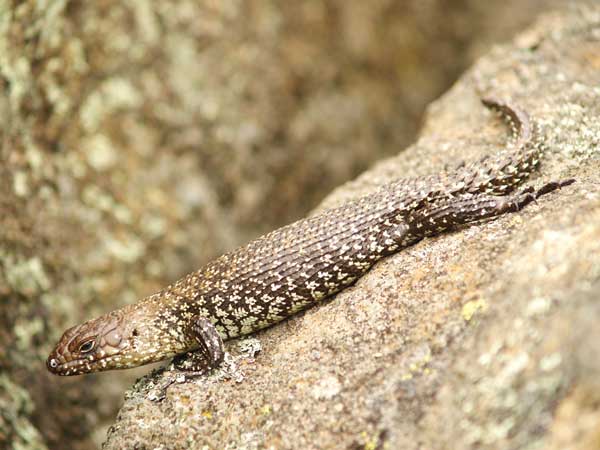Description:
These skinks love to bask and need places where they feel secure to hide. I housed two males and three females in a tank about the equivalent size of a 40-gallon breeder reptile tank. Use bark or soil for ground cover. I use Zoo Med’s Excavator Clay to mold and shape caves and tunnels so the skinks have a secure place to hide, with small hills formed for them to sit on and bask. Other cage furnishing can be clay pots, branches for climbing and basking or large rocks. Make sure everything is secure so nothing falls and injures a lizard. These guys love it hot, so provide a basking site with a temperature of about 110 to 120 degrees Fahrenheit at one end. The cool end should be around 80 degrees. Top the cage with a 10.0 or stronger UV lamp. Set lights on a 12-hour on/off cycle. If your house gets below 70 degrees at night, use an inferred heat emitter to maintain the proper evening temperature of 70 to 80 degrees. Lightly mist the tank once or twice a week. These skinks will lick water off of surfaces in addition to drinking from the furnished water bowl. If you want to house more than one gidgee skink together, make sure they are compatible first. Gidgee skinks live in family groups and actively defend their territory. Two skinks might think of each other as invaders to their home range and get into a heated fight. It’s better to house skinks together that already know each other and get along. If strange introductions are to be made, observe them carefully and often to ensure that there’s no fighting. If they fight, house them separately. They eat a number of items, including crickets, roaches, almost all other insects, fruit, leafy greens, beans, canned dog food, ground turkey and canned omnivore food. They will also eat pelleted food, such as those produced for bearded dragons, iguanas and tortoises. They also consume pinky mice, live or pre-killed. A quality calcium supplement can be added to insect and fruit/vegetable foods every other feeding, and a good multi vitamin supplement about once a week. These guys can be fed three times a week up to every day in appropriate amounts. When they are full, they will stop eating. You can judge how much to feed and how often by their appetite. Gidgee skinks are becoming more common as captive breeding success increases. There are no exports allowed from Australia, so all the gidgee skinks for sale in the U.S. should be captive bred. They are still expensive, but the price is slowly dropping. There are no color morphs that I’m aware of. They are quick and don’t really cotton to being held, but they can become quite personable over time. They are a great size and look really cool. Ken Foose produced his first captive-bred snakes at age 11. With a Master’s Degree in zoology, he has been both a zookeeper and curator. He opened Exotic Pets, which specializes in reptiles and amphibians, in Las Vegas in 1991. He is currently president of the International Herpetological Symposium.
Habitat:
Dry, almost desert areas with plenty of cover, such as rock crevasses, hollow logs, stumps and other shelter.
Range:
Throughout more arid areas of Australia and some offshore Islands
Scientific Name: Egernia stokesii
Species Group:
Family: Scincidae
Size: 7 to 10 inches
Level: intermediate
Weight:
Dangerous: No


